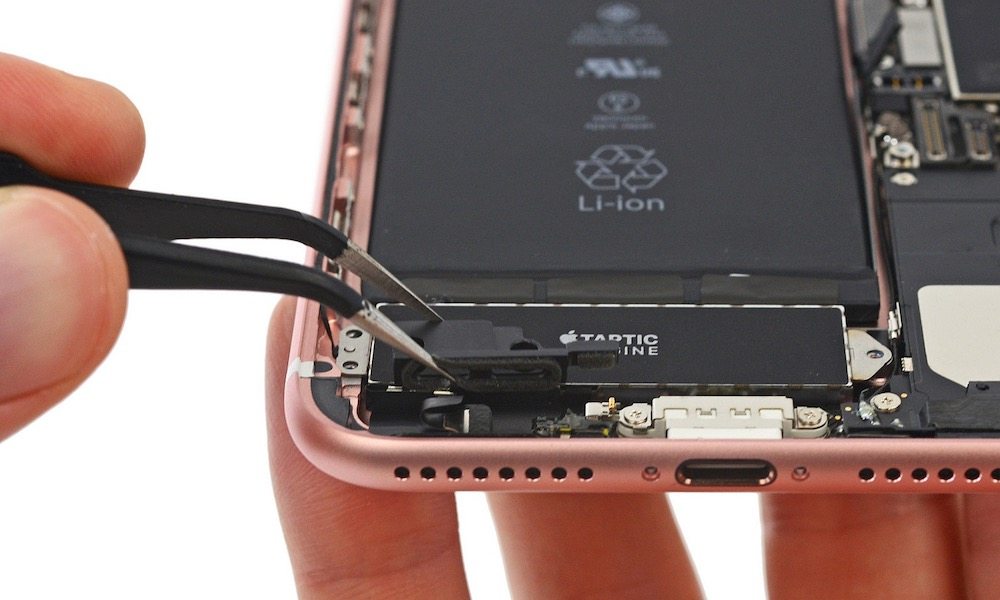A Deeper Look Into the iPhone 7’s New and Advanced Taptic Engine

Toggle Dark Mode
Yet another one of iPhone 7’s most promising new features, boasting far-reaching implications for advancing the depth and immersion of UI interaction (and beyond), is Apple’s all-new, advanced Taptic Engine — also known as the vibration feedback mechanism — employed exclusively by the hot new smartphone.
Whereas the iPhone 6/6s series featured a quote unquote “linear actuator” vibration engine, Apple has brought the same Taptic feedback technology to the iPhone 7 that was first introduced in the Apple Watch last year, officially ushering in the era of a more natural, “true force” feedback response, as opposed to your standard, run-of-the-mill vibration feedback.
As AppleInsider notes, the advanced Taptic engine employed by the iPhone 7 (and Apple Watch) is merely a highly advanced implementation of the Cupertino-company’s haptic user feedback interface, capable of producing the sensations of both motion and touch feedback, while generating a fundamentally distinct touch feedback experience to the end user. In fact, the Taptic engine employed on the iPhone 7 is so advanced — even compared to that employed by the iPhone 6s, according to AppleInsider — that when compared dichotomously, the iPhone 7 offers up a much “crisper,” more powerful feedback response than the previous generation iPhone.
As mentioned above, the iPhone 6s (and previous generation iPhones, in general) utilized what’s known as Apple’s “linear actuator” as the single means of producing the vibration sensations we’ve come to know and love on our iPhones. However, the iPhone 7, in conjunction with Apple’s new Force-touch Home Button, offers users a significantly more realistic, powerful, and functional Taptic feedback experience — one that’s so powerful, in fact, that even through a thick case, iPhone 7’s Taptic engine is noticeably more powerful and distinct than the linear actuator employed by the iPhone 6s.
Furthermore, whereas the linear actuator was well-known as a best-in-class vibration mechanism on the iPhone 6/6s, Apple’s new Taptic engine on the iPhone 7 is considerably more precise, capable of issuing a more robust array of feedback responses for various UI interactions. An example would be the iPhone 7’s ability to respond with haptic feedback when employing the pinch to zoom feature in the iOS Safari web browser. When users pinch to zoom, and if they ultimately reach the maximum zoom level allowable in iOS, iPhone 7’s Taptic engine will issue a custom haptic response to alert users that they’ve reached the inherent zoom limit.
Also worth noting is that Apple’s new Taptic engine won’t just be limited to the usual, system-wide UI interactions. Apple actually unveiled an all-new Taptic API alongside iOS 10, for example, effectively opening the door for 3rd party app developers to implement iPhone 7’s new Taptic engine — what was once an Apple-exclusive feature — for use within their 3rd party apps and games. For instance, iOS game developers could utilize iPhone 7’s new Taptic engine to illicit more realistic, immersive haptic feedback responses to actions carried out in iOS games.
To that end, the future of iPhone 7’s Taptic engine is looking bright as can be, especially as advanced new apps and games, which take full advantage of the feature, continue to slowly but surely make their debut on the app store.
Have you tried out Apple’s new Taptic engine on the iPhone 7? Let us know what you think in the comments!






